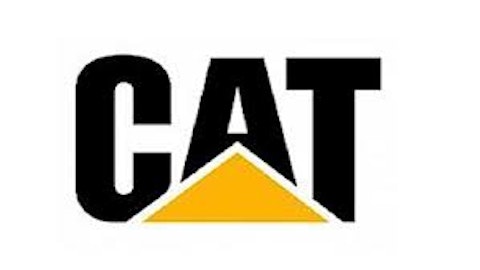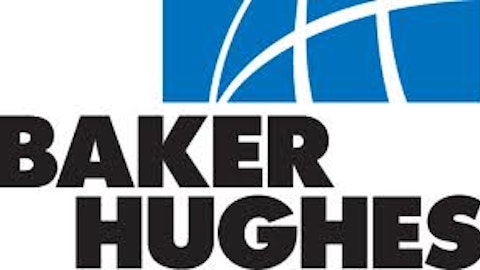Even after reducing its excess inventory by $2 billion in the fourth quarter of 2012, Caterpillar Inc. (NYSE:CAT) still faces a tougher road ahead. The firm still holds more than $15 billion worth of inventory and faces an uphill struggle to reduce the excess part of this huge inventory, which has been built up due to the economic and political uncertainty in the United States, continued economic turmoil in much of Europe, and slower growth in China. Consequently, this global economic uncertainty has made many companies limit their purchases of equipment that make up a significant proportion of Caterpillar’s total revenue.

The machinery giant reported fourth-quarter EPS of $1.04 on revenue of $16.08 billion, compared with $2.32 per share in the same quarter a year ago. The average estimate on Caterpillar was to deliver $16.13 billion in revenue with $1.70 in EPS.
The results missed expectations as earnings were reduced by $0.87 per share, due to a goodwill write down for a Chinese firm Siwei that the company bought in 2012. Siwei operates factories that make underground coal-mining equipment in China. If not for that goodwill charge, EPS would have come in at $1.91, which would have beaten the Street’s estimates of $1.70.
Acquisition mess
From the very first look when it was first announced, Siwei seemed like an expensive acquisition, but Caterpillar Inc. (NYSE:CAT) wanted more exposure to the underground coal mining equipment market in China, and acquisitions are considered a logical way to achieve that. Unfortunately, whenever a company is deploying a growth through acquisition strategy, there is always this long-term risk that the company will fail to integrate the acquired companies well. In other words, there always remains the risk that down the road combined operations could become disorganized, leading to a negative impact on the financial performance.
This $700 million acquisition has now been written down to almost zero. Caterpillar blames that Siwei management orchestrated a deliberate, multi-year, coordinated accounting misconduct at the Chinese firm before the acquisition.
Competition
CNH Global NV (ADR) (NYSE:CNH) operates in the farm construction machinery industry and is in direct competition with Caterpillar. But unlike Caterpillar, CNH Global sees strong growth as demand for its products remains high. The trend is expected by the analysts to continue this year as well. For 2012, agricultural equipment net sales of $15.7 billion were up 15% and construction equipment net sales of $3.8 billion were up 2%, both on a constant currency basis. Equipment net sales in 2012 were 81% agricultural equipment and 19% construction equipment. CNH Global’s geographic distribution of net sales in 2012 was 44% from North America, 31% EAME & CIS, 15% Latin America, and 10% APAC markets. Continued solid market conditions in the agricultural sector helped CNH Global achieve a full year net income, before restructuring and exceptional items, of $1.2 billion, an increase of 28% from 2011. This performance helped equipment operations to generate almost a billion in cash flow from operations for the full year.
In the international markets, another major competitor of Caterpillar is Komatsu from Japan. Though, Caterpillar has a much higher market share but Komatsu has performed very well in recent years. Komatsu expects demand from the emerging markets to recover this year, driven by stimulus spending. Moreover, the Yen’s slide in the recent months will also help the company to be more competitive. Also the company has no excess inventory or stockpile issues. This will also help the company see an immediate earnings improvement once the demand recovers. Overall, Komatsu business has remained stable — it might not be as well-established as Caterpillar but has all the potential to be more competitive and produce better sales growth and profit margins ahead.
Guidance
Finally, Caterpillar provided an extremely wide 2013 EPS guidance of $7 to $9 per share, with revenue ranging from $60-$68 billion. The forecast does look quite vague, but with all of the uncertainty in the global economy today, that seems like a fair estimate.
Stock Performance and Dividend
The global economic uncertainty led to a stagnant price action in the Caterpillar’s stock price last year. For all of 2012, shares gave a return of only 4.5% to its shareholders. However, Caterpillar pays a dividend that has grown rapidly since it was first started. Caterpillar also increased its dividend payout again in 2012 from $1.84 to $2.08. The increased payout is still less than 25% of its overall earnings, indicating that future increases in dividend are likely as it will be very manageable for the company. The rapid dividend increase over the last few years has given shareholders something to cheer about amidst the lackluster stock performance.
The article This Equipment Maker Is Still Not a Buy originally appeared on Fool.com and is written by Nauman Aly.
Copyright © 1995 – 2013 The Motley Fool, LLC. All rights reserved. The Motley Fool has a disclosure policy.




